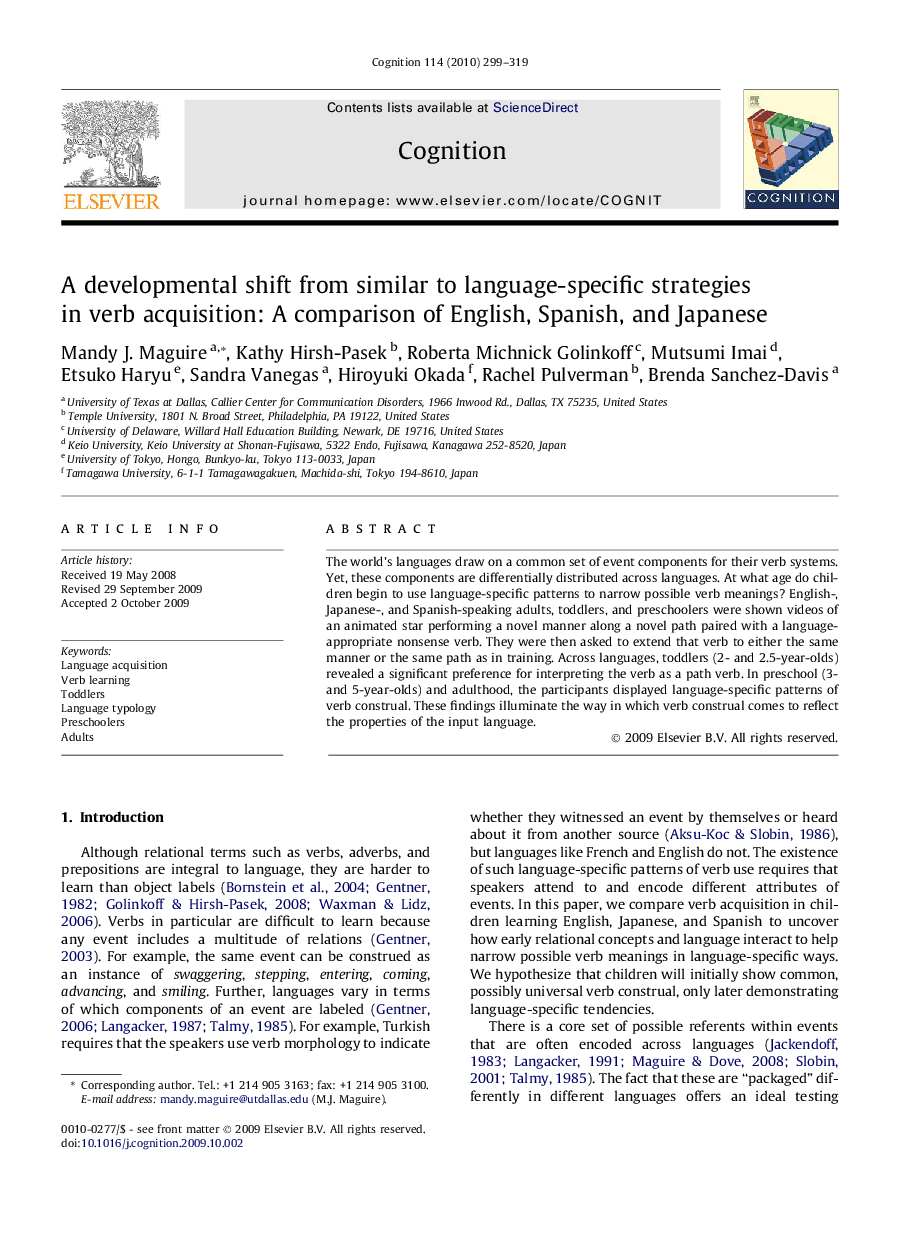| Article ID | Journal | Published Year | Pages | File Type |
|---|---|---|---|---|
| 926858 | Cognition | 2010 | 21 Pages |
The world’s languages draw on a common set of event components for their verb systems. Yet, these components are differentially distributed across languages. At what age do children begin to use language-specific patterns to narrow possible verb meanings? English-, Japanese-, and Spanish-speaking adults, toddlers, and preschoolers were shown videos of an animated star performing a novel manner along a novel path paired with a language-appropriate nonsense verb. They were then asked to extend that verb to either the same manner or the same path as in training. Across languages, toddlers (2- and 2.5-year-olds) revealed a significant preference for interpreting the verb as a path verb. In preschool (3- and 5-year-olds) and adulthood, the participants displayed language-specific patterns of verb construal. These findings illuminate the way in which verb construal comes to reflect the properties of the input language.
